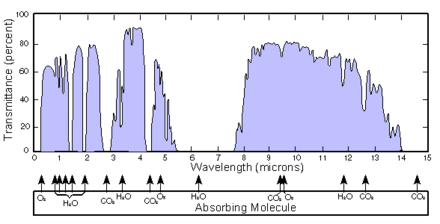J band (infrared)

In
Betelgeuse is the brightest near-IR source in the sky with a J band magnitude of −2.99.[1] The next brightest stars in the J band are Antares (−2.7), R Doradus (−2.6), Arcturus (−2.2), and Aldebaran (−2.1).[2] In the J band Sirius is the 9th brightest star.
The J band is a frequent source of ground based observations since the wavelengths it covers pass through
It can be used to scrutinize the photosphere of giant and supergiant stars while mostly avoiding opacities from molecular bands and also has access to the 1080 nm He I line which is useful in the study of circumstellar disk interactions around T-Tauri stars.[5] J, H and K-band spectroscopy is also commonly used to observe and research brown dwarfs[6] and directly imaged exoplanets.[7]
References
- ^ R. Cutri and M. Skrutskie (2009-09-07). "Very Bright Stars in the 2MASS Point Source Catalog (PSC)". The Two Micron All Sky Survey at IPAC. Retrieved 2011-12-28.
- ^ "Simbad object query:Jmag<-2 & Vmag>-9". SIMBAD Astronomical Database. Retrieved 2012-08-22.
- ^ "Infrared Astronomy Optical Filters". www.andovercorp.com. Retrieved 2023-04-01.
- S2CID 7880289.
- S2CID 119458175.
- S2CID 16850733.
- S2CID 7173368.

